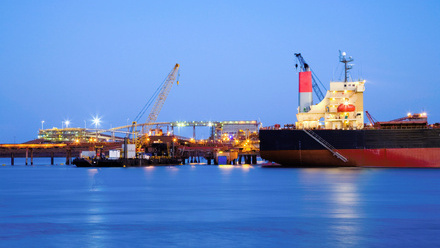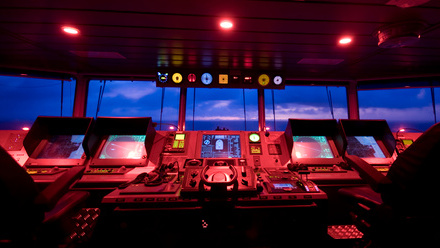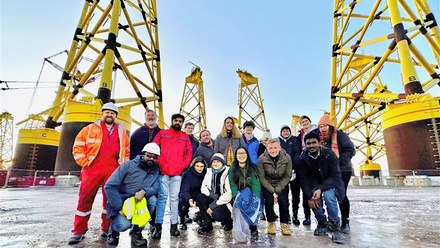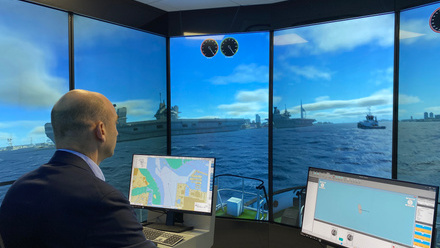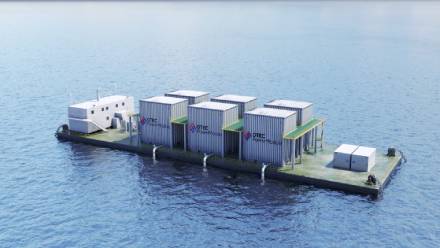Planning for doomsday
Academics and scientists are preparing for global disaster. Marine professionals must take part in conversations to ensure the industry is prepared for the worst.
‘Global catastrophic disaster’ conjures up images of Hollywood-style asteroid strikes, super volcanoes and rogue AI, all requiring muscular heroes to step in and bravely save the day. In reality, however, planning for Global Catastrophic Risk (GCR) is already underway – academics, scientists and bureaucrats are attending workshops and hosting webinars to ensure our planet is, in some way, prepared for the worst.
An exploratory workshop by the European Committee for Standardisation (CEN ELEC Technical Committee 391) hosted on 18 September in Brussels began a consultation process around a potential new GCR standard. It pulled together government agencies, international professional associations, scientists, academics, emergency responders and standards writers, with a number of marine professionals and IMarEST members dialling in to watch the virtual version. Attendees looked at catastrophe planning for a wide array of risks, including pandemics, nuclear war, space weather, rogue technologies, climate induced tipping points and ecological chain collapse.
“It’s important to understand that these planetary scale events are not just disasters that may impact humanity, but also all life on Earth,” says Assistant Professor Wayne Harrop, former director of the Centre for Disaster Management (Applied Research Group) at Coventry University, who was recently appointed chairman of a special CEN working group on European civil protection and crisis management.
“We exist in a system of symbiotic hierarchies and food chains that are tightly woven together, so a disaster that affects one element can have second, third and fourth-order effects that impact humanity and planetary level functioning.”
This thinking is not just applied to biological life but also the growing interface with hardware and software. A massive coronal mass ejection (CME) from the Sun, for example, could see the loss of electricity grids, satellites and digital infrastructure, which would strand shipping by knocking out GPS and navigation systems, but also any electrical components not protected by a Faraday cage.
A CME could also down planes and cripple our communications, food delivery, medical and financial systems, leading to mass loss of life and social and economic breakdown. Technology advances are also generating newly emergent risks that are yet to be fully understood, such as nanotechnology, AI or biomimicry.
Other threats include nuclear war, pandemics, runaway climate change, super volcanic eruptions and impacts from near-Earth objects. While it may seem that nothing could be done to prevent a super volcanic eruption, Harrop points out that planning and mitigation can be vital to saving lives in the initial crisis and then reducing or preventing further chain reaction events.
The standards committees want to understand existing research, key terminologies, systems vulnerabilities, civil rights, scenario planning, measuring and quantifying risk, macro impact/probability tools, and the state of collective planning needs. This could involve anchoring a new standard into existing standards ISO Risk Management Standard 31000 and ISO Crisis Management 22361.
Shipping, which has a strategically vital role in delivering the fuel, food and goods that underpin our modern way of life, should certainly have this debate on its radar and engage with the evolving consultation process.
Harrop points out that climate change is forcing many organisations and enterprises to consider both systematic and systemic failure modes, when there is partial or full collapse of systems leading to degradation and debilitation of other systems in an ongoing chain reaction. “As a species we’re not very good at this on a major scale but it’s essential to plan for worst-case scenarios,” he says.
The response to Covid-19 showed how existing inequalities, particularly for those in the Global South, can leave billions of people with less resilience and less capacity to recover from disasters. The maritime industry faced huge disruption – and displayed admirable capacity to adapt – during Covid-19 restrictions, but it came at great cost to many seafarers. Lessons learned from that should help inform the industry as debate now begins about other potential global catastrophic risks. These are big issues to confront – but given the climate crisis, ecological degradation, war and advances in technology, the time to understand, plan and mitigate is now.
“We know the planet has seen catastrophic and mass extinction events before, so it is not an ‘if’, it is a ‘when’,” concludes Harrop. “This is about taking steps so we’re ready from anticipation to recovery.”

